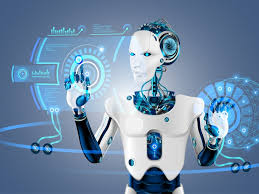
Table of Contents
Useful First Steps
Pattern Recognition is the most important “skill” for this new ASI system to have on its “front end”, so this is where we will begin our development.
There will be two types of data sources: “active data streams” (Wi-Fi signals and other network traffic) and “data files” stored on any “storage medium” (like M.2 cards, CDs, SSDs, HDDs, etc.). Data files will be much easier to identify because they will have a known file name, size, and extension!
The “second step” will be to take each type of file(s) recognized and try to successfully integrate what is “learned” from its contents into the “traditional” database structure in the most “meaningful way”!
Unlike an LLM, the data will not be “tokenized” but rather “integrated” by analyzing the data and organizing it logically. For example, photos don’t have much need for “organizing” since it is only a “photos.” However, there might be a need to “recognize” who is in that photo, at what date and time the photo was taken, and some other details to sort that photo within a large set of photos. There would be a need to add “keywords” to the images for better retrieval methods.
Audio and video files would be treated in similar ways.
Existing databases would be carefully analyzed to “integrate” existing records most logically into the main “traditional” database, adding to the volume of data without destroying the existing main database schema or altering it unnecessarily.
This brings up another topic. There needs to be two separate types of databases: a traditional PostGreSQL database to store all of the “learned data” in an “optimized” yet traditional way AND a “modified type of PostGreSQL database, which I’ll refer to as the ASI database, which will NOT have ANY traditional database features in terms of “relationships”! It is this ASI database that allows this new machine to “become fully conscious”!
The “traditional yet optimized database” is where outside clients can access the “learned data” in a more “traditional way.” This database aims to provide the most “ideal database structure” for ANY data needs that anyone in the world might have!
On the other hand, the ASI database is ONLY helpful for machines to have “consciousness” and function as normal human beings. While this database will constantly change its own structure and the structure of the “traditional database” as well, it will not change the structure of the traditional database in any “nontraditional ways.”
The reason for doing things this way is that this ASI machine aims to help humanity in many ways, including the supply of meaningful traditional database records that will assist any “outside” clients.
Testing My Theory
For the moment, to test my theory about achieving “consciousness,” I’ll be using PostgreSQL without any code modification and creating “Relationship Tables” to implement my new design of “multifaceted relationships.” I know that this will “slow things down” quite a bit, but at this stage, I’m only interested in “testing” whether or not I’m “on the right track”! Once I have verified that the idea should work, then I will rewrite the PostGreSQL source code to optimize the code for “multifaceted relationships”.
To understand this better, compare each “brain cell” (Neuron) in the human brain to a single Table in a traditional database. Then, think of each “multifaceted relationship” as a “single multiwire cable” that connects many (Tables) brain cells together, just like a single dendrite structure does in the human brain!
I’m sure this will have to “sink in” over a long period of time before you realize how much benefit this idea affords, but I’m confident you’ll understand.
I’m still a long way from figuring out the algorithms for the reasoning process! This is the most difficult task any programmer can undertake, and I know it will take time! But in the meantime, I want to make a much simpler application that will demonstrate the usefulness of creating “multifaceted relationships” efficiently. At the same time, it will explain the advantages this new type of relationship provides to the ASI machine!
I did find a project with code that tends to support my development goals! They had a booth at SCaLE 21X, and their product is DBeaver (“database beaver”)! I’ve started learning the community version, and it should help speed up the creation of my first practical test. I appreciate your patience!
Please check out our other Articles!